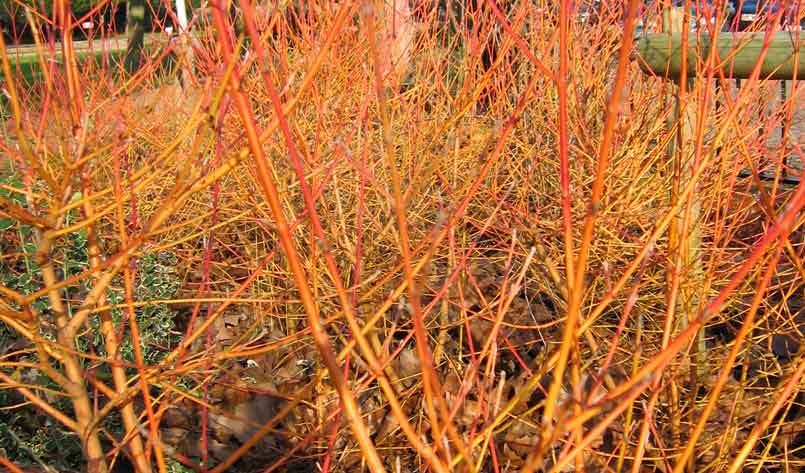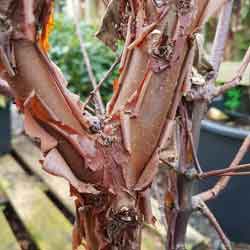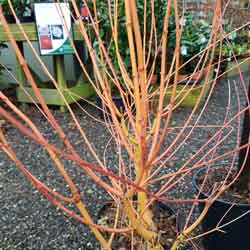
Winter coloured stems and bark
Winter coloured stems are often over-looked for providing colour and structure in the garden. After the leaf colour of the autumn has gone and many plants have lost their leaves, there are several plants that shine out especially on a sunny winter’s day.
Dogwood (Cornus) are shrubs that have bright red, yellow, purple-black or orange stems in the winter months. Planted on their own or in groups they provide fantastic colours that stand out in winter. They can be underplanted with other low-growing, evergreen shrubs such as Euonymus ‘Emerald ‘n’ Gold’ or ‘Emerald Gaiety’ to emphasise the colour of the Dogwood and provide winter ground cover. Our favourite variety is Cornus ‘Midwinter Fire’ that, as it names suggests, has red-orange, flamed coloured bark in the winter. Trim most varieties of Dogwood back hard (nearly to ground level) in spring to encourage new shoots with the best colour. The exception to this is ‘Midwinter Fire’ which should not be pruned hard.
Japanese Maples such as the Coral-Bark Maple (Acer palmatum ‘Sangokaku’) and the new varieties Acer palmatum ‘Bi Hoo’ and ’Going Green’ have red, flame orange-red and green stems respectively providing all year round interest from the wonderful small trees. Plant them in a sheltered spot out of the wind in sun or shade and they will do well. They also grow well in pots but need constant watering during spring, summer and autumn and must not be allowed to dry out.

The Paperbark Maple (Acer griseum), Birch such as Betula ‘Wakehurst Place Chocolate’ and the Tibetan or Birch-bark Cherry (Prunus serrula) have bronze and coppery-brown peeling bark that are striking in the winter. Prunus serrula is striking on its own but
we also have a few varieties flowering cherries that have been grafted on to the stems of Prunus serrula to provide superb shows of spring flowers, fantastic autumn leaf colour and the coppery, peeling bark in the winter. These varieties include Prunus ‘Royal Burgundy’ and ‘Pandora’.
The native Silver Birch (Betula pendula) always looks good in the winter with its silvery-white bark and pendulous branches but the bright white bark of the various varieties of Himalayan Birch (Betula utilis var. Jacquemontii) are even more striking against the blue sky of a cold winter’s day. Varieties such as ‘Snow Queen’, ‘Silver Shadow’, ‘Grayswood Ghost’ and the more compact variety ‘Moonbeam’ are all fantastic, hardy trees that will grow almost anywhere.
The winter stems of the Scarlet Willow (Salix alba ‘Britzensis’) can be seen shining out around the fields of Somerset. As with most willows, these tree grow well in wet conditions. If they are pruned or pollarded every year, new bright orange-red stems are produced that provide a stunning display.



